This post is in partnership with Greenwood Nursery. All thoughts and words are my own.
It’s one of the greatest migrations of the animal kingdom: Every spring, hundreds of thousands of monarch butterflies sweep across the continent from Mexico to Canada and then back again in fall, a journey spanning nearly 3,000 miles and multiple generations.
In fact, recent studies show that it takes up to four generations for monarchs to make it north out of Mexico and into Southern Canada! Along the way, the butterflies feed on a variety of nectar-rich flowers but breed on only type of plant: milkweed.
There are 140 species of milkweed, but only a quarter of them are known to be important host plants for monarchs and even less are available commercially for planting. With how much monarchs depend on milkweed for their survival, you’ve probably thought about growing your own milkweed to help them along the way.
But to truly help them, it starts with growing the right kind of milkweed.

Choosing the right species for your garden
If you’re going through the effort to plant milkweed for the monarchs, you should strive to plant native milkweed.
Planting non-native milkweed is a common mistake that many people make.
It’s not by any fault of their own, however: One of the most popular (and non-native) milkweed species, Asclepias curassavica or tropical milkweed, is widely sold in nurseries. It’s also been found to do more harm than good.
When grown in warm climates where the plants don’t die back, the year-round tropical milkweed encourages monarch butterflies to overwinter in the Southern United States rather than continue their migration to Mexico.
By hatching and feeding on tropical milkweed, caterpillars have an increased chance of being infected with a protozoan parasite called Ophryocystis elektroscirrha (OE), which weakens them as adults.
OE is found in all species of milkweed, but isn’t a problem with natives because the leaves are only desirable to caterpillars in the early stages of growth. Once the plant goes dormant in winter and loses its leaves, OE is no longer a threat.
But with tropical milkweed, the leaves stay viable all winter long and make it more likely that a caterpillar will become infected.
A report by the Monarch Joint Venture found that 49 percent of winter-breeding monarchs had OE infections, compared to only 9 percent of migratory monarchs sampled in Mexico and 15 percent of migratory monarchs sampled in the northern US and Canada.
This is not to say that gardeners in California and the coastal Southern states (or zones 8 through 11) who grow tropical milkweed should immediately rip it out—just remember to cut the plants back in late fall to reduce the spread of OE, promote new growth of fresh, healthy leaves, and encourage monarchs to finish their migration.
Native milkweed species
Common milkweed (Asclepias syriaca): Native from the eastern United States south to Georgia and west through Tennessee to Kansas and Iowa. Grows 3 to 6 feet and has white and purple blooms.
Butterfly weed (Asclepias tuberosa): Native from the northeast and eastern United States south to Florida, west to Texas, and north through Colorado to Minnesota. Grows 1 to 2 feet tall and has light orange blooms.
Swamp milkweed (Asclepias incarnate): Native from the northeast United States south to Georgia, west to Texas, and north to North Dakota. Grows 4 to 5 feet tall and has mauve, pink, or white blooms.
Sandhill milkweed (Asclepias humistrata): Native from the southeast United States and north to North Carolina. Grows 1 to 3 feet tall and has pink, lavender, or white blooms.
Showy milkweed (Asclepias speciosa): Native to the western United States east to Illinois, south to Texas, and west to California. Grows 1 to 3 feet tall and has rosy-purple and pink blooms.
Mexican whorled milkweed (Asclepias fascicularis): Native to the northwestern United States south to Baja California and north to Arizona. Grows 2 to 3 feet tall and has pale pink, purple, and white blooms.
If you want to plant new milkweed, there are several species of native milkweed in the US. One of the most common, Asclepias tuberosa, is also known as butterflyweed. It’s native to most parts of the country (except the Northwest) and blooms in a brilliant orange or yellow.
Quick tip
Not to worry, Northwesterners: You can still plant showy milkweed (Asclepias speciosa) or Mexican whorled milkweed (Asclepias fascicularis)
Butterfly weed does best in dry, sandy soil with little nutrition. It’s often seen growing in fields and along the sides of the road, which means it’s drought-tolerant and a good choice for low-maintenance perennial gardens.
I’ve grown a few species of milkweed over the years, including butterflyweed, and found them to be impressively resilient—surviving not only major heat spells, but also oleander aphids, milkweed bugs, and many, many cycles of hungry striped caterpillars.
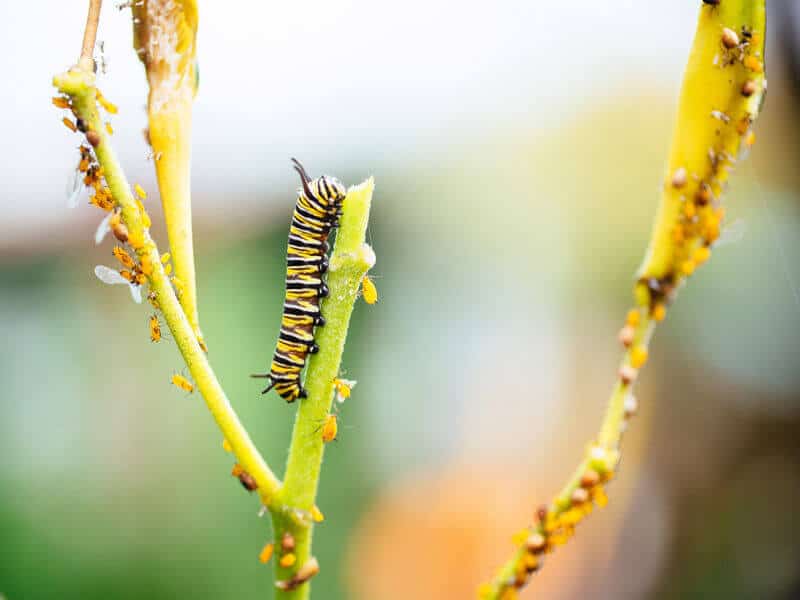
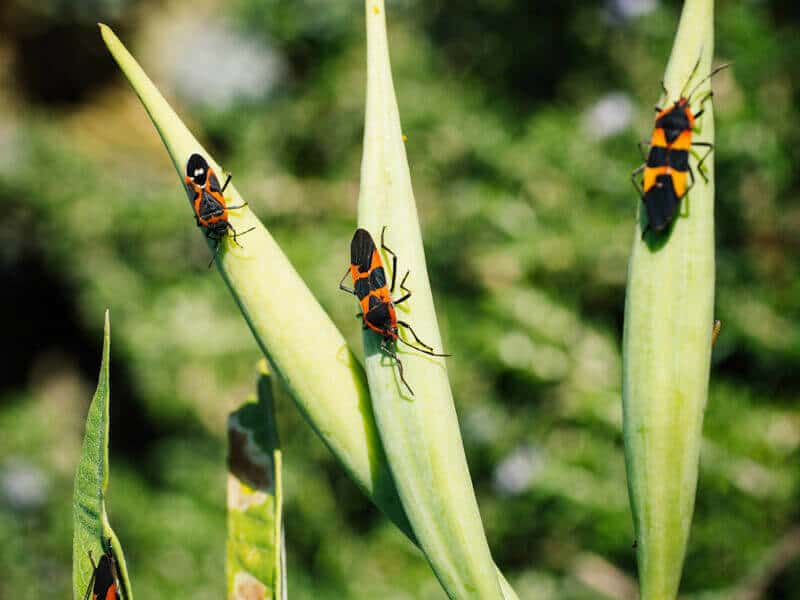
It takes only a few caterpillars to defoliate an entire plant in a couple of weeks, but sure enough, the milkweed comes back every time.
Disclosure: If you shop from my article or make a purchase through one of my links, I may receive commissions on some of the products I recommend.
If butterflyweed is not native where you are, or you want to diversify the milkweeds in your garden, I encourage you to visit a native plant nursery in your area. You can also source seeds from one of my favorite seed suppliers below.
Where to buy
Milkweed seeds

Growing milkweed from transplants
Milkweed plants can be planted in spring (after the last frost has passed) or in fall (about six to eight weeks before the first frost to allow time for the roots to establish).
In spring, your milkweed plants will likely be dormant with no green leaves. This is when the plant is focusing all its energy into developing a strong root system, and it won’t “wake up” until the soil warms. Oftentimes, milkweed is one of the last perennials to break dormancy in your garden.
The key thing to remember is to not overwater your milkweed while it’s dormant.
It’s easy to water too much in spring, leading to root rot in your plants. (Swamp milkweed is the only species that can handle overwatering, making it perfect for wet climates and rain gardens.)
If you plant milkweed in fall, your plants will be able to establish themselves before winter. In cold climates, milkweed will die back and return in spring with new growth.
Light
Milkweed plants grow best in full sun locations that get six to eight hours of sunlight per day.
Soil
Each milkweed variety prefers a different type of soil.
- Butterfly weed and Mexican whorled milkweed grow best in dry conditions.
- Swamp milkweed thrives in a moist environment, as its name implies.
- Sandhill milkweed prefers dry, sandy soils.
- Showy milkweed and common milkweed grow well in average garden soil.
- Tropical milkweed prefers hot, humid conditions, but can be grown as annual in cooler climates.
Spacing
Milkweed plants establish large, deep root systems and prefer not to be transplanted once they’re in place. Most species of milkweed should be spaced about 18 inches apart.
Swamp milkweed, however, eventually matures to form clumps up to 36 inches wide, and should be spaced 30 to 36 inches apart. (You can also plant swamp milkweed and its cultivars closer together, and just thin the plants as they grow in.)
Watering
With the exception of swamp milkweed (which needs a naturally moist environment or regular watering), other species of milkweed have average to less than average water needs. It’s better to err on the side of underwatering a bit, as they tolerate drier conditions.
A good rule of thumb is to wait until the top 1 to 2 inches of soil feel dry before you water again. Then, water deeply and ensure the soil drains well.
Fertilizing
Native milkweed is a low-maintenance perennial plant that doesn’t require fertilizer. It does fine in average to poor soils, so you can fuss less over this plant and just enjoy it!
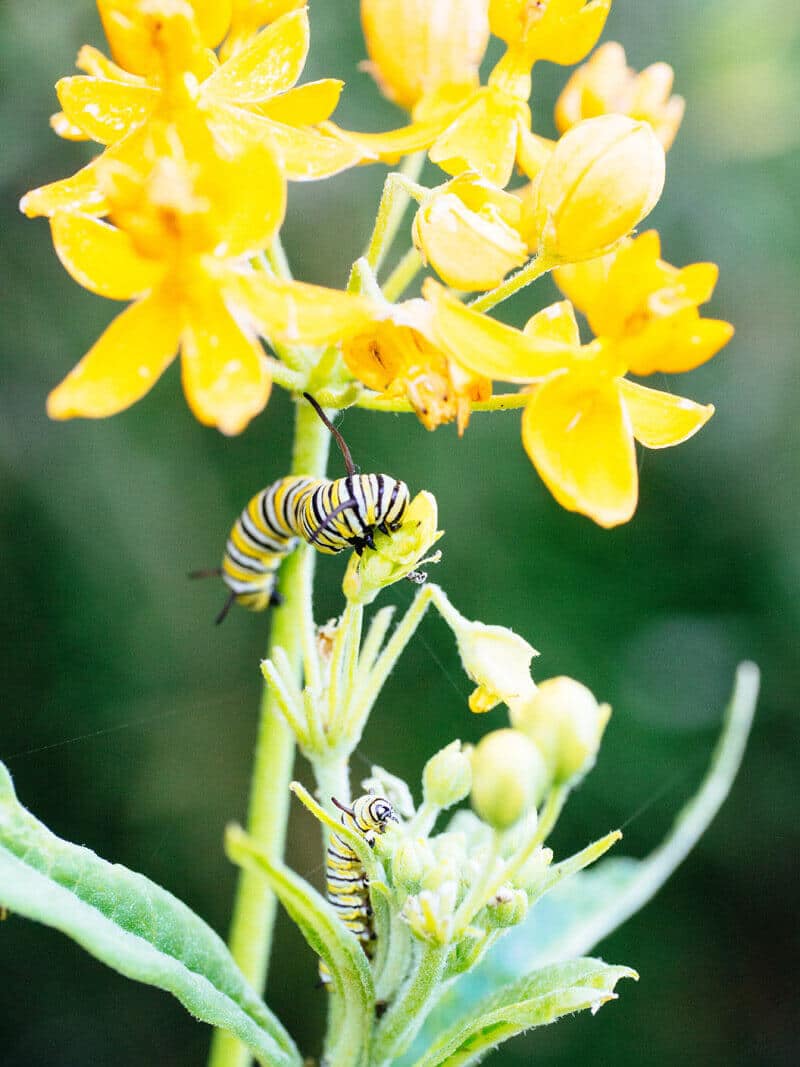
Growing milkweed from seed
Whether you purchased seeds or collected seeds from other milkweed plants, there’s a little trick to getting them to germinate. Unlike other flower seeds you may be used to, you can’t just toss out milkweed seeds in spring and wait for them to grow… because you’ll be waiting quite a while!
This is another common mistake people make: not stratifying their milkweed seeds first.
Milkweed seeds require cold stratification to germinate. The easiest way is to mimic Mother Nature and sow your seeds in place in fall after the first killing frost (typically in November). This allows the seeds to go through a period of chilling over winter and then germinate in spring.
Read this next: Why your seeds aren’t sprouting—and how to get tricky seeds to germinate, fast
But if you live in a warm zone without frost, or if you want to start milkweed seeds in spring, you can give your seeds a simple cold treatment in the refrigerator.
Simply put the milkweed seeds in a damp paper towel or paper coffee filter, place in a resealable zip-top bag, and refrigerate in an out-of-the-way spot for about 30 days (or more, if you’re not in a hurry).
They should start to germinate during this time and have little roots coming out. At this stage, you can pot up the seedlings indoors for transplanting later.
If the seeds have not germinated yet (but have gone through at least 30 days of cold stratification), you can sow them outside as long as you remember to water consistently.
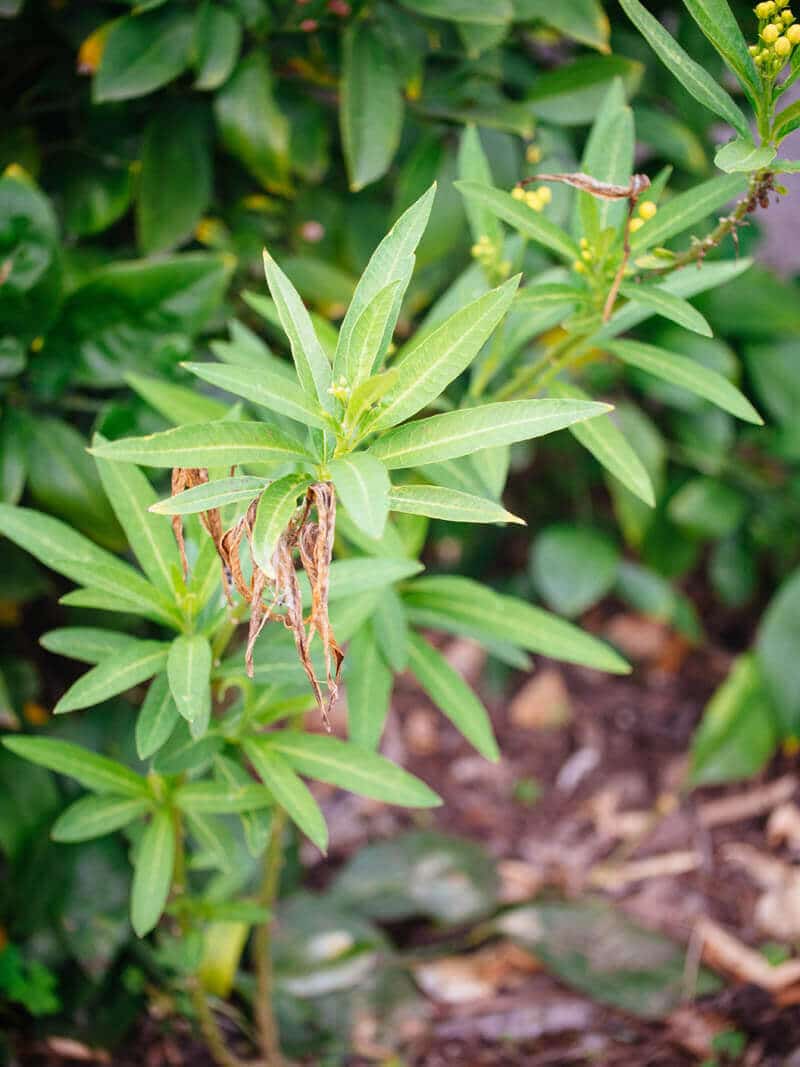
How many plants do you need?
Unfortunately there’s no exact answer to this, as it’s unknown how many milkweed plants are needed to attract monarch butterflies as they move through your yard.
It’s generally estimated that one milkweed plant feeds one monarch caterpillar, but since each species varies in size, leaf shape, and growth rate—and monarchs sometimes lay multiple eggs on a single plant—it’s a good idea to grow at least six plants to make sure you always have a steady supply of milkweed throughout the season. If you have space for 10 plants or more, even better!
If you can’t start out with that many plants, not to worry—remember that it’s called milk WEED for a reason! The plants reseed freely and you’ll likely have more milkweed popping up in new spots in your yard if you let them go to seed every year. They can easily invade a small space, so be sure to cut off the seed pods if you don’t want volunteers everywhere.
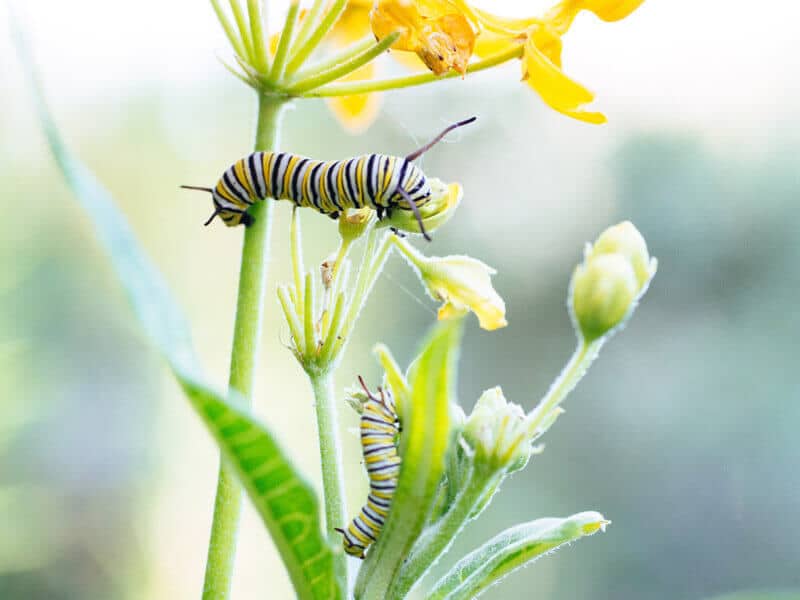
Will milkweed come back every year?
Milkweed is a hardy perennial that can survive down to zone 3 and comes back every year in spring. While the foliage itself dies back and the plant goes dormant in the winter months, the rootstock is still very much alive and does not need protection.
The exception is tropical milkweed (Asclepias curassavica), which is only hardy to zone 8b, remains evergreen to zone 9b, and is often grown as a frost-sensitive annual in cooler climates.
To help prevent parasitic infection in monarch butterflies, it’s recommended that gardeners in warm climates cut back their tropical milkweed plants in winter to encourage the butterflies to continue their migration to Mexico each year (and not stick around in the southern United States during winter).
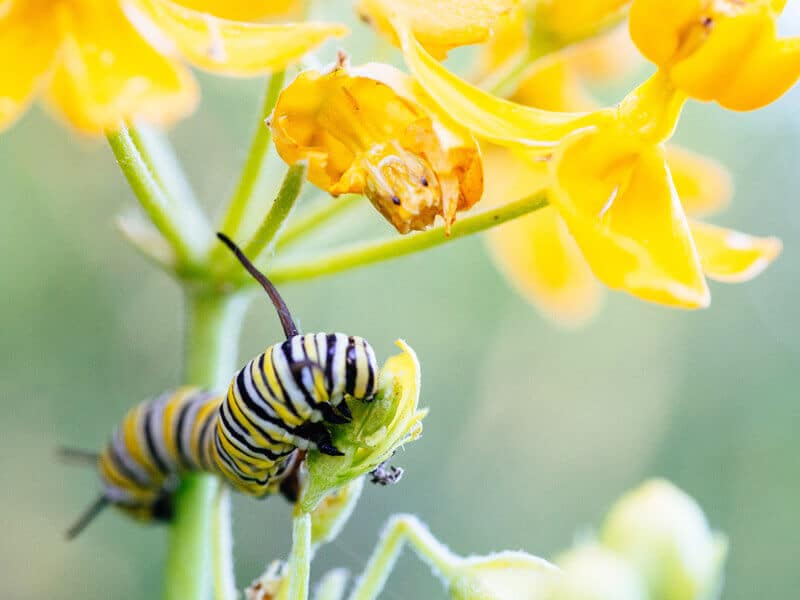
Growing tips from my own experience
- Purchase plants from a reputable nursery to avoid systemic pesticide use that could harm pollinators, or start your plants from seed.
- Offer a couple varieties of milkweed, as some monarchs may have a preference for one or the other, and plant a few patches throughout your yard for them to land on.
- Be aware that common milkweed (Asclepias syriaca) can spread aggressively by runners. Plant it in a suitable place in your garden where it won’t invade your lawn or overcrowd other plants.
- Plant low-growing perennials in front of the milkweed, as they’ll hide the spindly “skeleton” stems once the monarchs finish feasting. You’ll still be able to see them bloom, as the caterpillars don’t eat all the way up to the flowers.
This post is sponsored by Greenwood Nursery. View my full advertising disclosure.
This post updated from an article that originally appeared on February 17, 2017.


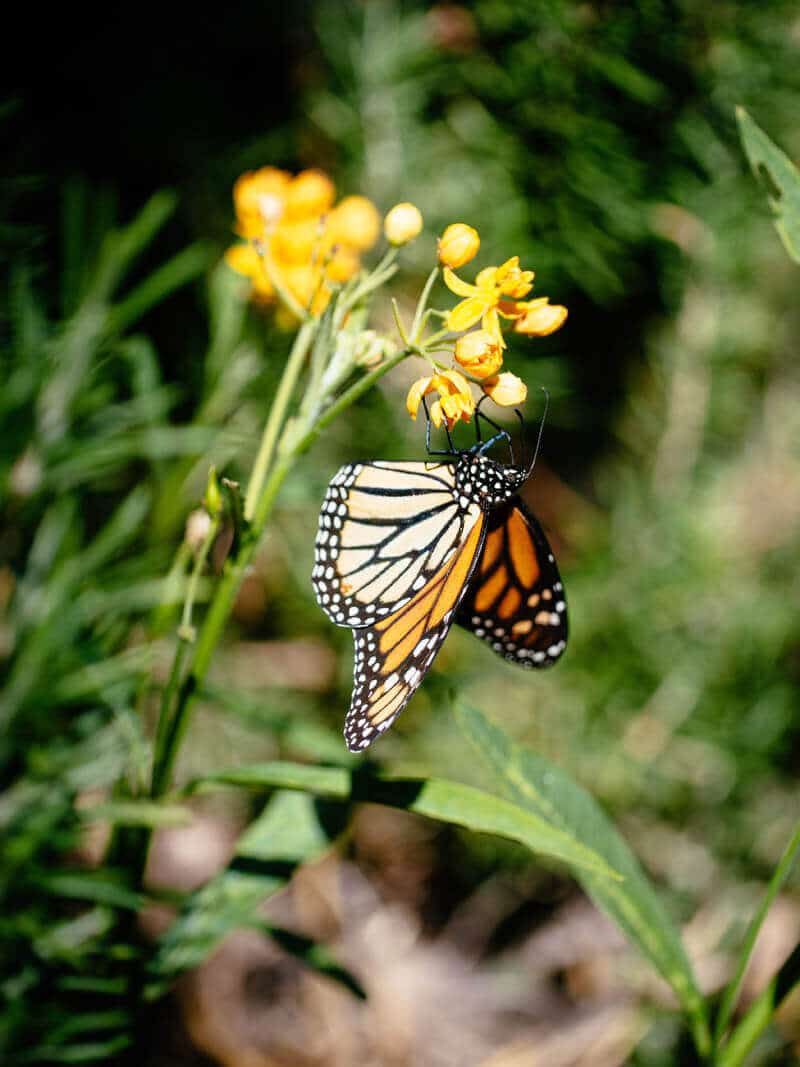













How far down should I cut the swamp milkweed down when it’s time to cut back?
How can aphids be exterminated without harming the milkweed?
Is milkweed deer resistant or toxic to deer or other animals birds etc?
I found this article very interesting and helpful. I started a new large perennial garden for my first time back in the fall and am still adding to it. I planted entire packs of 4 different kinds of milkweed seed that all required cold stratification around October I think, maybe November. However, to this point, none of them have germinated. Is it possible that they might still germinate or should I go ahead and plant other plants in that area. I’ve planted quite a few different types of pollinators, some seeds and some roots and plants.
I found this a very interesting and useful article. I am brand new to gardening and have gotten several butterfly attracting flowers and plants. I only got 2 milkweeds so I will buy seeds to start my own. I’ve planted butterfly weed, passion vine, dephinia, bleeding heart, phlox, penta and spicy jatopha. Haven’t seen any butterflies or caterpillars yet, tho Daniel at the nursery told me there were a few eggs on the leaves.
I live in NE Indiana & I have a beautiful patch of Milkweed in our garden, which seems to be the Common Milkweed or the Swamp Milkweed by your descriptions above, but I never see Monarch Caterpillars on any of it. I see an occasional Monarch butterfly come by, but few & far between all spring-summer long. The mauve/white/pink blooms are gorgeous when they come on & the greenery is very healthy every year. It’s been about 5 years now since I planted it, some that I harvested from the side of the road out in the country nearby. I just can’t believe I never see any Caterpillars eating the leaves. My Sister in Florida has tons of them & they always consume every leaf in her Milkweed Garden. I don’t understand??? I tried to specifically do this for the Monarchs. We have tons of bees, yellow jackets, even the “Milkweed bug” you showed with the orange & black body, but no Caterpillars ever. What could be wrong??
Should milk weed be mowed off in late fall or early winter? When will the last eggs hatch? I do not want to mow the plants off and harm the eggs, caterpillars, or butterflies.
I really appreciate your knowledge
I’m growing milkweed from seeds and wanted to know the best way to grow them successfully
I remember the migrations from the late 50’s and early 60’s
The sky was literally full of monarchs….a huge dark cloud for as far as you could see and everyone came out to watch that amazing event….if only we knew then what we know now 😪
I have seen several caterpillars on my milkweed plants and then suddenly they are gone. I never see the cocoon. Any ideas what happens? Thank-you
That happened to me. Most disappeared but two had cacoon far from the original plant. I watched one open and produce a beautiful Monarch
They hide when they make their cocoons, look under the rim of pots, inside the branches of vines, between tall rocks. If they have eaten your milkweed plant they are around. You just have to look very carefully to find them. They will not go too far from the plant they have eaten.
Your article didn’t mention Rush Milkweed. Asclepias Subulata which is native in the Mojave Desert where I live.
I can’t find anybody that sells it.
Try contacting your local county extension service office. They usually have a Master Gardener group & can give you amazing info…& they are excellent resources for all things native – most MGs or the groups hold native plant sales & are usually happy to also plant-swap and/or mentor new people by sharing their plants via cuttings or when thinning the plot. Hope this helps!!
One major reason to NOT grow tropical milkweed (Asclepias Curassavica) is that 1.) it is highly invasive in the U.S. I’ve seen it growing in nature preserves in Florida where it does not belong and on shorelines near lakes. 2.) It can fool monarchs to believe that they have successfully migrated to Mexico where they go to breed. This is obviously a huge problem. You may be good at cutting it back, but when its seeds (which are wind dispersed) spread to other properties they wont get cut back and OE risk increases exponentially.
When in doubt, just plant native. Go to your local native plant store and get the species native to your area. The beauty is that you can always collect the seeds and plant more.
Thank you so much for such a lovely article with informative content. Hope to see more of a similar article.
That’s what I’ve learned as well. So long as the tropical milkweed goes dormant each winter (either naturally due to weather or from you cutting it back), the monarchs will be fine.
This is awesome! I live in Tennessee and love supporting local nurseries. I’m totally going to order a few plants from them this springs.
They’re lovely people and very professional. Enjoy your spring garden planning!
I’ve been growing native milkweed(from Theodore Payne) for several years. I’m curious about the red and black insects in one of your photos. I also get those. Any info?
Those are milkweed bugs. They feed on the seed pods but don’t do any damage to the plant itself (or the caterpillars). Pretty harmless insects. They also don’t stick around for long (short life cycle) so it’s best to just live with them.
I was concerned about the OE and tropical milkweed as well but I’ve read enough that it seems that if you cut it back that should help reduce the spores of the OE. In a regular here in SE Texas it would be nipped back by the freezes anyway, as it was this year, so that helps. http://texasbutterflyranch.com/2015/04/30/tropical-milkweed-ok-for-monarch-butterflies-just-cut-the-dang-stuff-down/
I had some success growing swamp milkweed and tuberosa last year from seed but I’ve yet to see them return from the roots this year. We’ll see. I’ll be resowing seeds I stratified in the fridge here shortly.